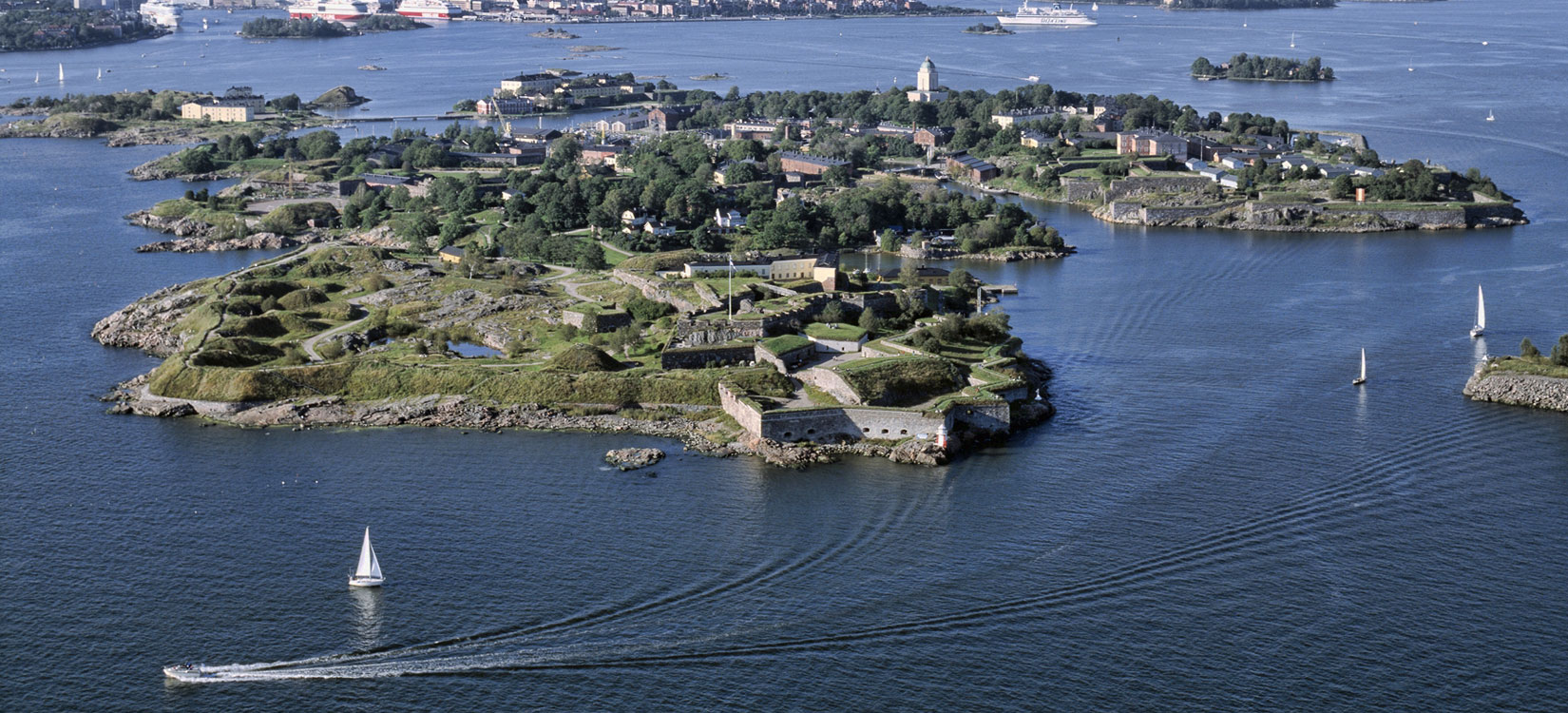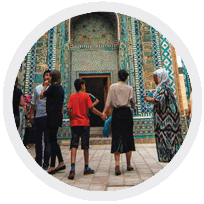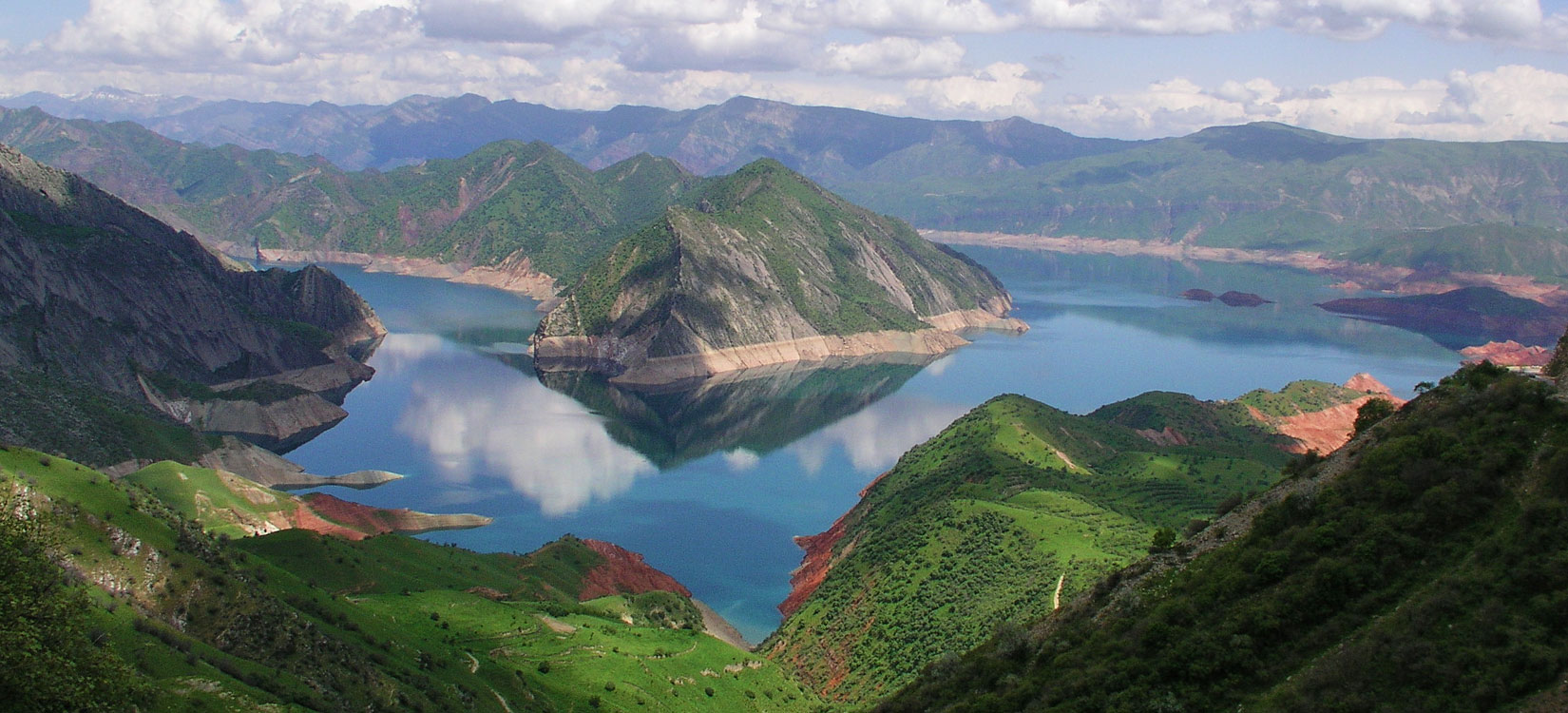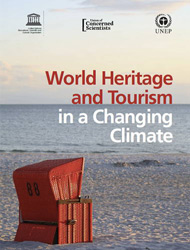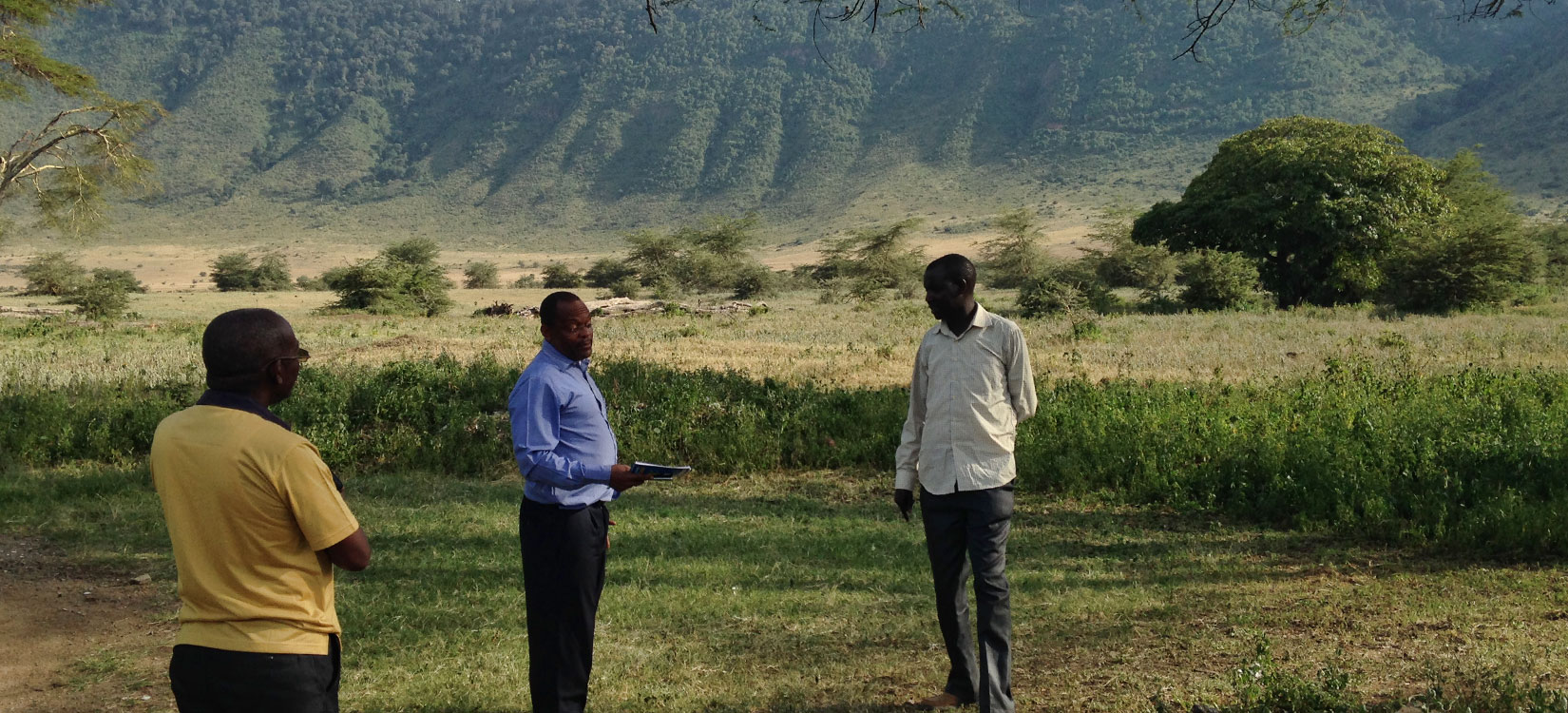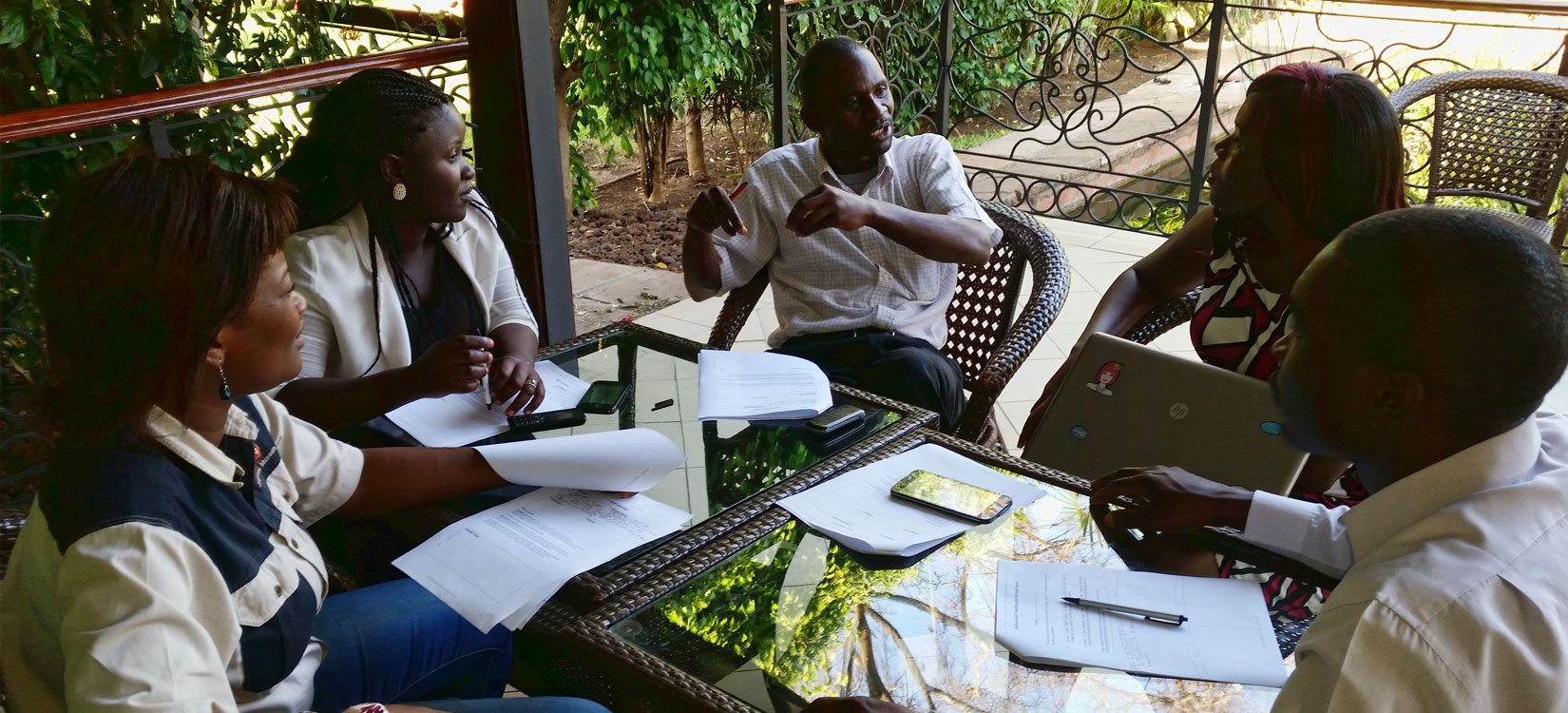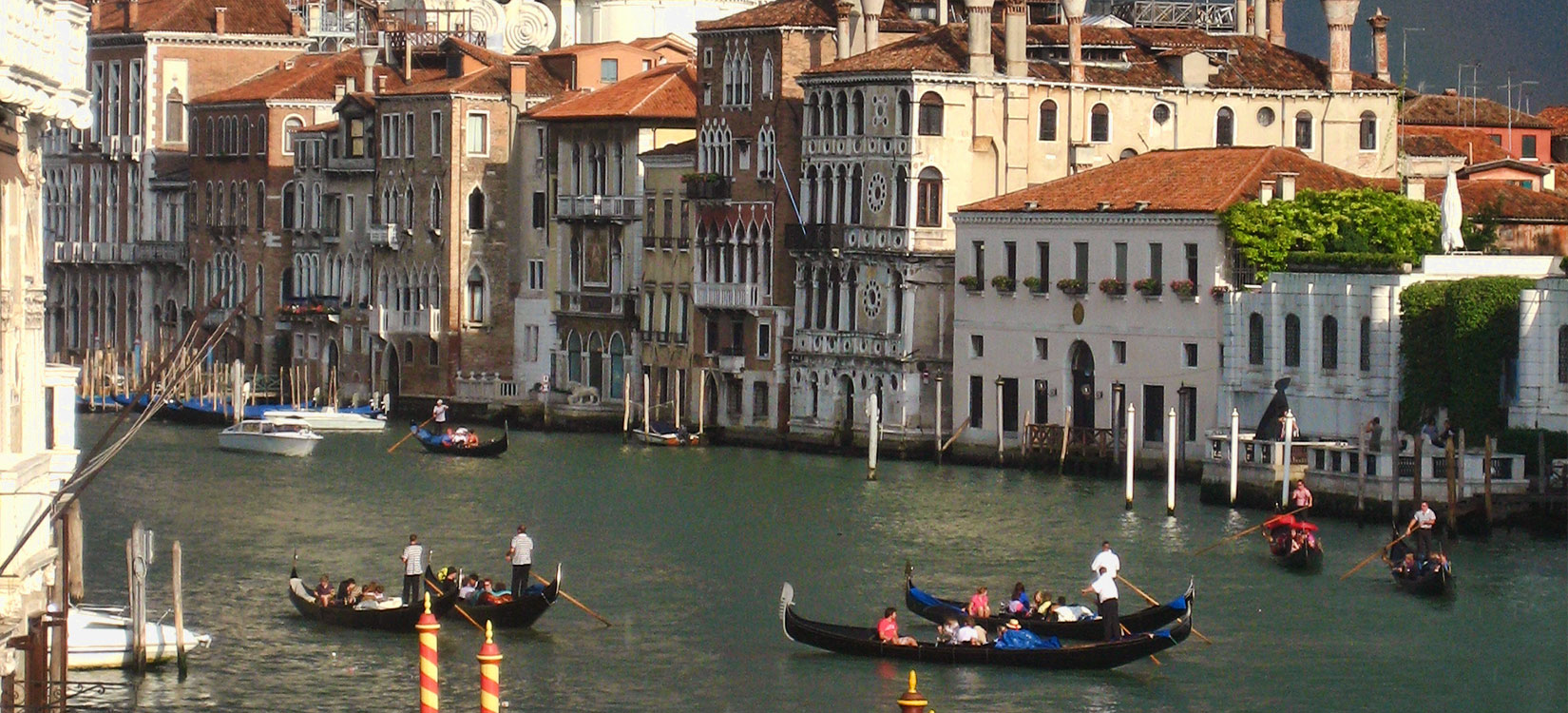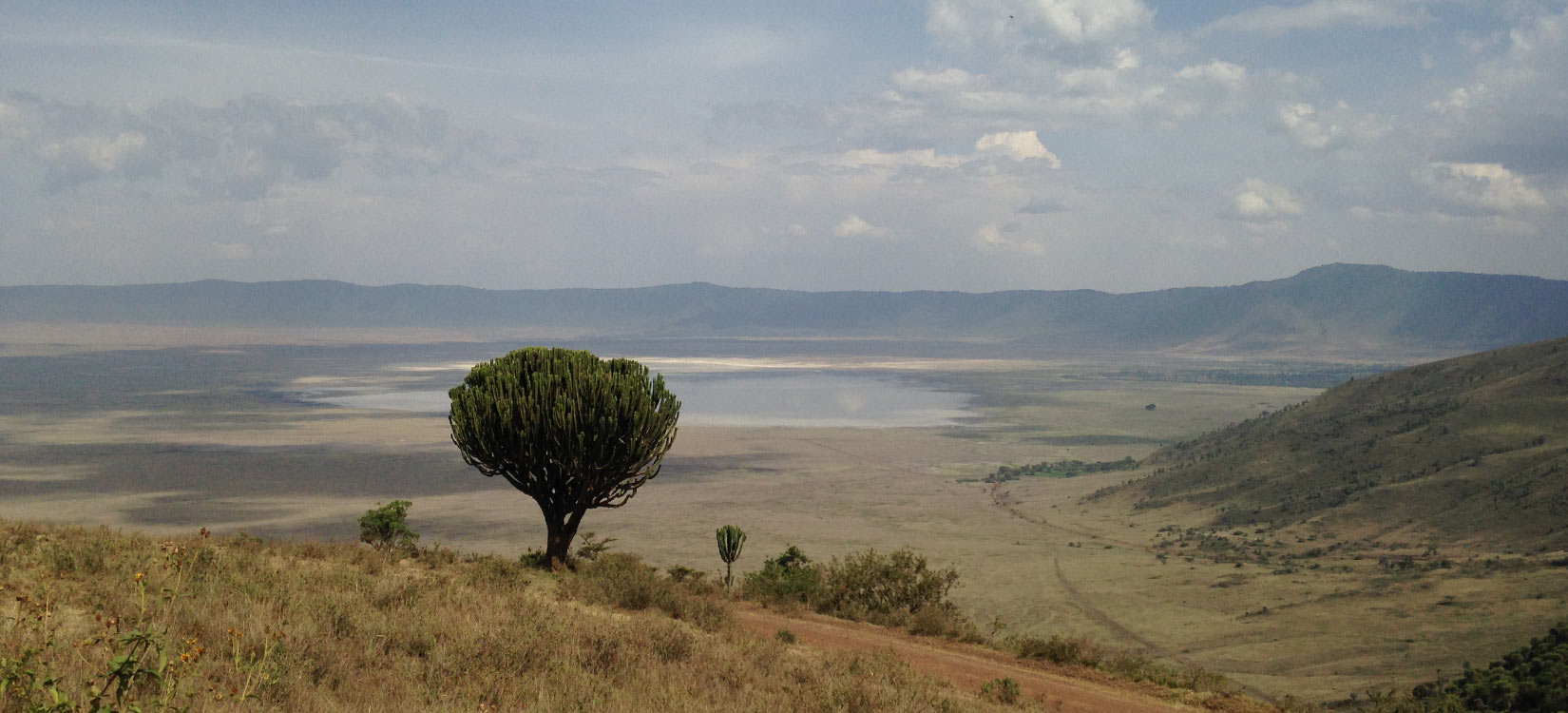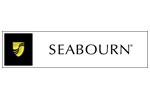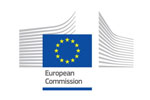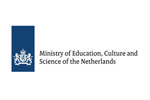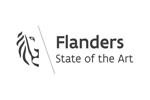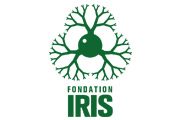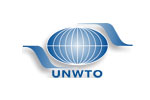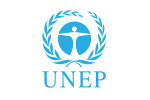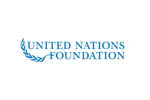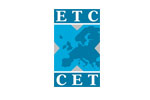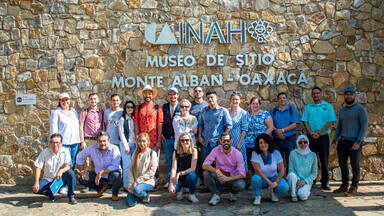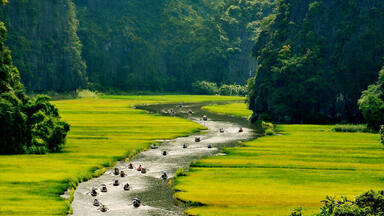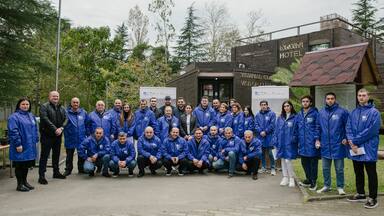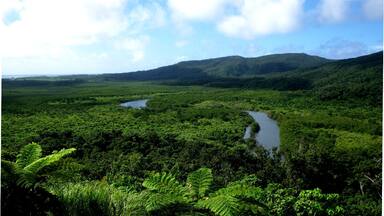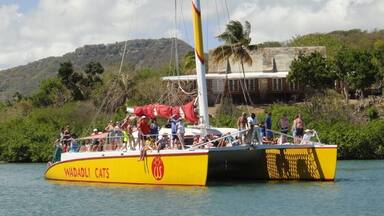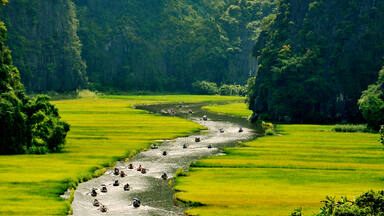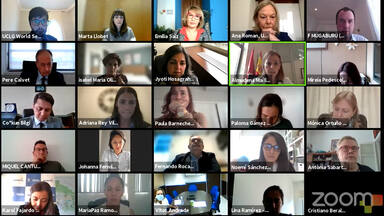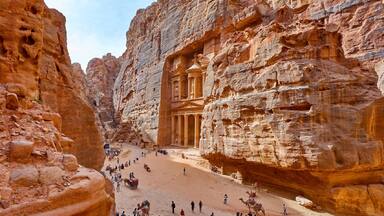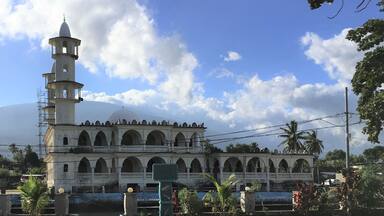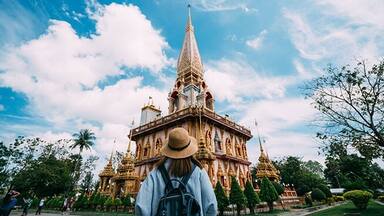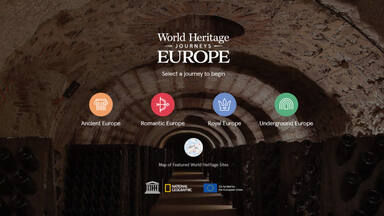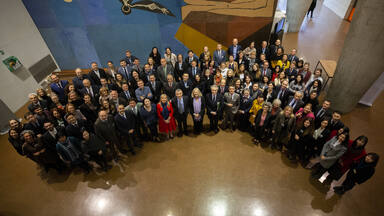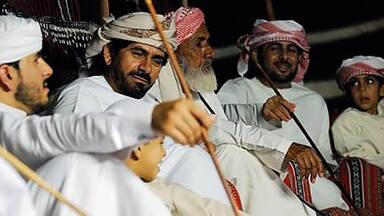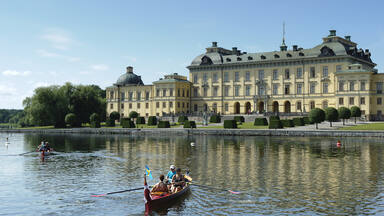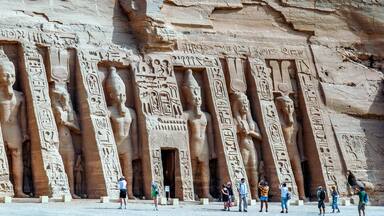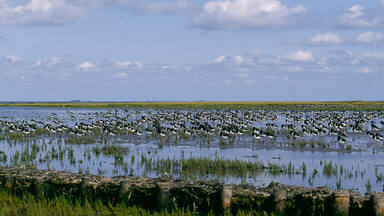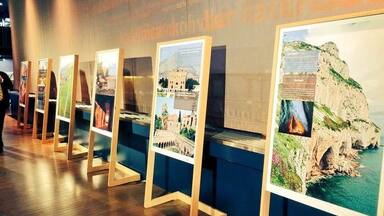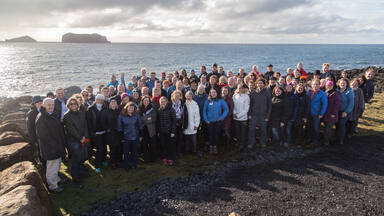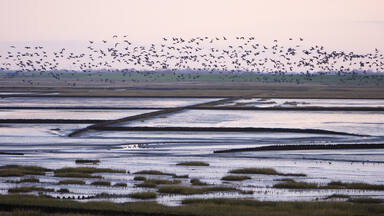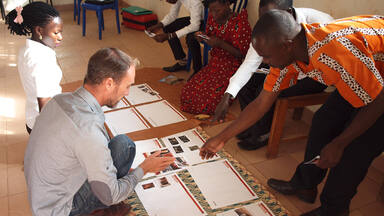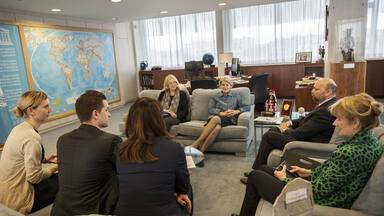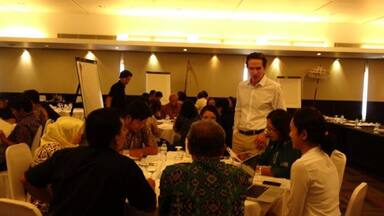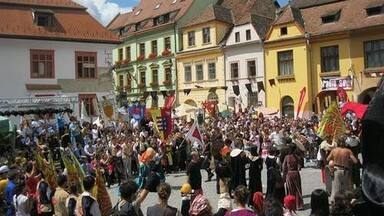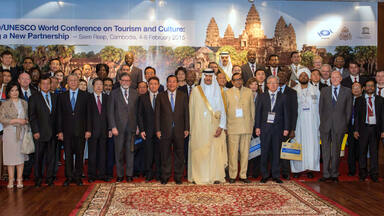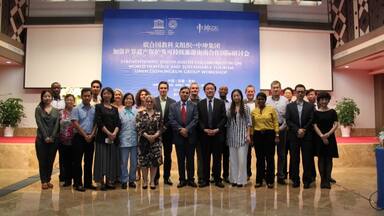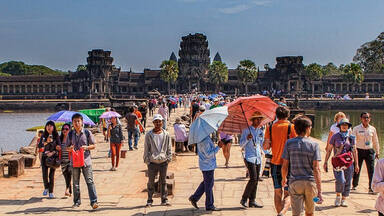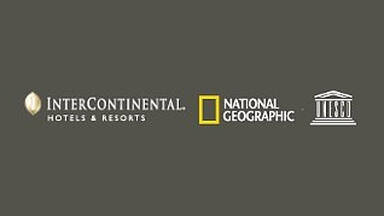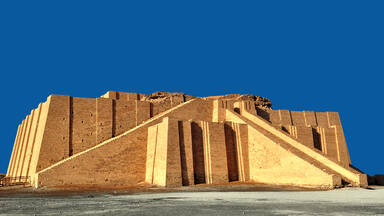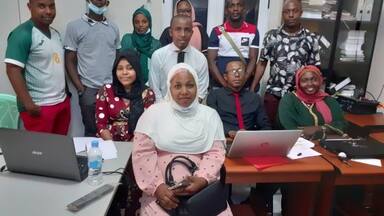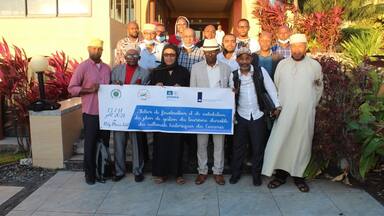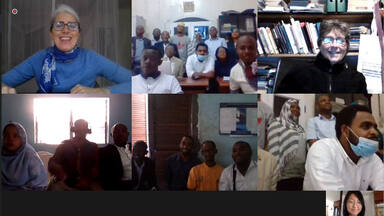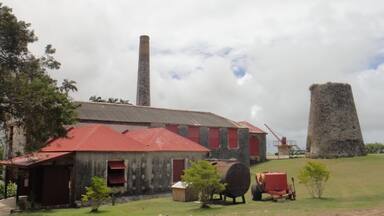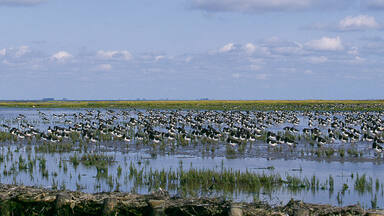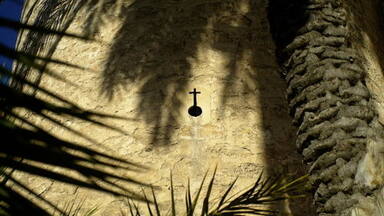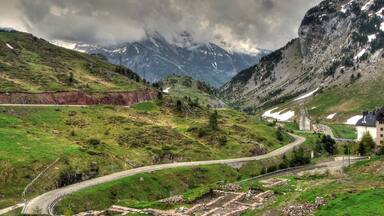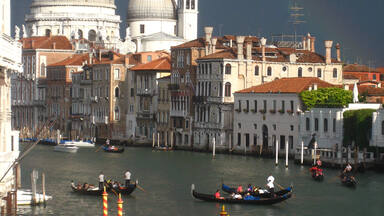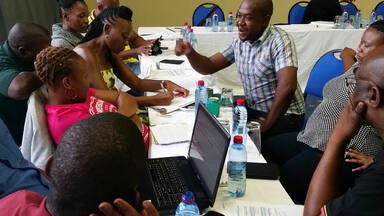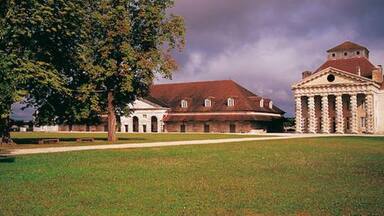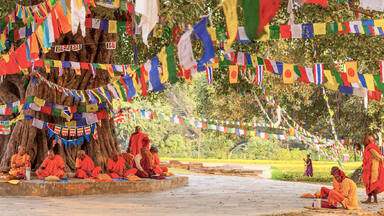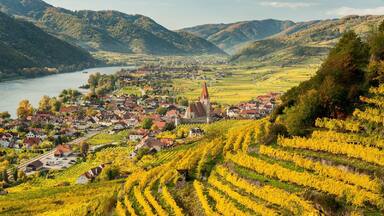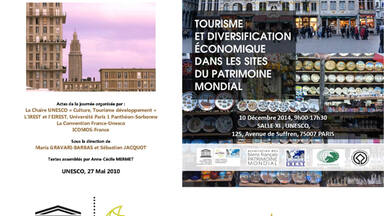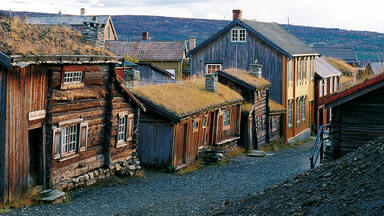The UNESCO World Heritage and Sustainable Tourism Programme represents a new approach based on dialogue and stakeholder cooperation where planning for tourism and heritage management is integrated at a destination level, the natural and cultural assets are valued and protected, and appropriate tourism developed.

Vision
World Heritage and tourism stakeholders share responsibility for conservation of our common cultural and natural heritage of Outstanding Universal Value and for sustainable development through appropriate tourism management.

Mission
Facilitate the management and development of sustainable tourism at World Heritage properties through fostering increased awareness, capacity and balanced participation of all stakeholders in order to protect the properties and their Outstanding Universal Value.
Focus Areas
Sustainable Tourism Policy
and Strategy Development
A key goal of the UNESCO WH+ST Programme is to strengthen the enabling environment by advocating policies and frameworks that support sustainable tourism as an important vehicle for managing cultural and natural heritage. Developing strategies through broad stakeholder engagement for the planning, development and management of sustainable tourism that follows a destination approach and focuses on empowering local communities is central to UNESCO’s approach.
Supporting Sustainable Tourism Recovery
Enhancing capacity and resilience in 10 World Heritage communities
Supported by BMZ, and implemented by UNESCO in collaboration with GIZ, this 2 million euro tourism recovery project worked to enhance capacity building in local communities, improve resilience and safeguard heritage.
Policy
orientations
Defining the relationship between world heritage and sustainable tourism
Based on the report of the international workshop on Advancing Sustainable Tourism at Natural and Cultural Heritage Sites (Mogao, China, September 2009), the World Heritage Committee at its 34th session adopted the policy orientations which define the relationship between World Heritage and sustainable tourism (Decision 34 COM 5F.2).
Sustainable Tourism Tools
Manage tourism efficiently, responsibly and sustainably
based on the local context and needs
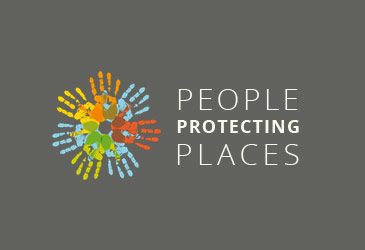
People Protecting Places is the public exchange platform for the World Heritage and Sustainable Tourism Programme, providing education and information, encouraging support, engaging in social and community dialogue
Capacity Building Activities
Helping site managers and other tourism stakeholders
to manage tourism more sustainably
Capacity Building in
4 Africa Nature Sites
A series of practical training and workshops were organized in four priority natural World Heritage sites in Africa (Lesotho, Malawi, South Africa, Tanzania, Zambia and Zimbabwe) with the aim of providing capacity building tools and strategies for site managers to help them manage tourism at their sites more sustainably.
15 Pilot Sites in
Nordic-Baltic Region
The project Towards a Nordic-Baltic pilot region for World Heritage and Sustainable Tourism (2012-2014) was initiated by the Nordic World Heritage Foundation (NWHF). With a practical approach, the project has contributed to tools for assessing and developing sustainable World Heritage tourism strategies with stakeholder involvement and cooperation.
Supporting Community-Based Management and Sustainable Tourism at World Heritage sites in South-East Asia
Entitled “The Power of Culture: Supporting Community-Based Management and Sustainable Tourism at World Heritage sites in South-East Asia", the UNESCO Office in Jakarta with the technical assistance of the UNESCO World Heritage and Sustainable Tourism Programme and the support from the Government of Malaysia is spearheading the first regional effort in Southeast Asia to introduce a new approach to sustainable tourism management at World Heritage sites in Malaysia, the Philippines and Indonesia.
Heritage Journeys
Creation of thematic routes to foster heritage based sustainable tourism development
Cultural tourism is one of the largest and fastest-growing global tourism markets. Culture and creative industries are increasingly being used to promote destinations and enhance their competitiveness and attractiveness.
Many locations are now actively developing their cultural assets as a means of developing comparative advantages in an increasingly competitive tourism marketplace, and to create local distinctiveness in the face of globalization.
UNESCO will endeavour to create networks of key stakeholders to coordinate the destination management and marketing associated with the different heritage routes to promote and coordinate high-quality, unique experiences based on UNESCO recognized heritage. The goal is to promote sustainable development based on heritage values and create added tourist value for the sites.
UNESCO World Heritage Journeys of the EU
Creating heritage-based tourism that spurs investment in culture and the creative industries that are community-centered and offer sustainable and high-quality products that play on Europe's comparative advantages and diversity of its cultural assets.
World Heritage Journeys of Buddhist Heritage Sites
UNESCO is currently implementing a project to develop a unique Buddhist Heritage Route for Sustainable Tourism Development in South Asia with the support from the Korea International Cooperation Agency (KOICA). South Asia is host to rich Buddhist heritage that is exemplified in the World Heritage properties across the region.
Partners
Programme Background
In 2011 UNESCO embarked on developing a new World Heritage and Sustainable Tourism Programme.
The aim was to create an international framework for the cooperative and coordinated achievement of shared and sustainable outcomes related to tourism at World Heritage properties.
The preparatory work undertaken in developing the Programme responded to the decision 34 COM 5F.2of the World Heritage Committee at its 34th session in Brasilia in 2010, which requested
“the World Heritage Centre to convene a new and inclusive programme on World Heritage and Sustainable Tourism, with a steering group comprising interested States Parties and other relevant stakeholders, and also requests the World Heritage Centre to outline the objectives and approach to the implementation of this programme".
The Steering Group was comprised of States Parties representatives from the six UNESCO Electoral Groups (Germany (I), Slovenia (II), Argentina (III), China (IV), Tanzania (Va), and Lebanon (Vb)), the Director of the World Heritage Centre, the Advisory Bodies (IUCN, ICOMOS and ICCROM), the United Nations World Tourism Organization (UNWTO) and the Swiss Government as the donor agency.
The Government of Switzerland has provided financial support for specific actions to be undertaken by the Steering Group. To coordinate and support the process, the World Heritage Centre has formed a small Working Group with the support of the Nordic World Heritage Foundation, the Government of Switzerland and the mandated external consulting firm MartinJenkins.
The World Heritage Committee directed that the Programme take into account:
- the recommendations of the evaluation of the concluded tourism programme (WHC-10/34.COM/INF.5F.3)
- the policy orientation which defines the relationship between World Heritage and sustainable tourism that emerged from the workshop Advancing Sustainable Tourism at Natural and Cultural Heritage Sites (Mogao, China, September 2009) (WHC-10/34.COM/INF.5F.1)
Overarching and strategic processes that the new World Heritage and Sustainable Tourism Programme will be aligned with include the Strategic Objectives of the World Heritage Convention (the five C's) (Budapest Declaration 2002), the ongoing Reflections on the Future of the World Heritage Convention (WHC-11/35.COM/12A) and the Strategic Action Plan for the Implementation of the World Heritage Convention 2012-2022 (WHC-11/18.GA/11), the Relationship between the World Heritage Convention and Sustainable Development (WHC-10/34.COM/5D), the World Heritage Capacity Building Strategy (WHC-10/34.COM/5D), the Global Strategy for a Representative, Balanced and Credible World Heritage List (1994), and the Evaluation of the Global Strategy and PACT initiative (WHC-11/18.GA/8 - 2011).
In addition, the programme development process has been enriched by an outreach to representatives from the main stakeholder groups including the tourism sector, national and local governments, site practitioners and local communities. The programme design was further developed at an Expert Meeting in Sils/Engadine, Switzerland October 2011. In this meeting over 40 experts from 23 countries, representing the relevant stakeholder groups, worked together to identify the overall strategic approach and a prioritised set of key objectives and activities. The proposed Programme was adopted by the World Heritage Committee in 2012 at its 36th session in St Petersburg, Russian Federation.
International Instruments
International Instruments Relating to Sustainable Development and Tourism.
Resolutions adopted by the United Nations, charters adopted by ICOMOS, decisions adopted by the World Heritage Committee, legal instruments adopted by UNESCO on heritage preservation.
Resolutions adopted by the United Nations
- Report by the Department of Economics and Social Affairs: Tourism and Sustainable Development: The Global Importance of Tourism at the United Nations’ Commission on Sustainable Development 7th Session (1999)
- Resolution A/RES/56/212 and the Global Code of Ethics for Tourism adopted by the United Nations World Tourism Organization (1999)
Charters adopted by ICOMOS
- The ICOMOS International Cultural Tourism Charter (1999)
- The ICOMOS Charter for the Interpretation and Presentation of Cultural Heritage Sites (2008)
Decisions adopted by the World Heritage Committee
- Decision (XVII.4-XVII.12) adopted by the World Heritage Committee at its 25th Session in Helsinki (2001)
- Decision 33 COM 5A adopted by the World Heritage Committee at its 30th Session in Seville (2009)
- Decision 34 COM 5F.2 adopted by the World Heritage Committee at its 34th Session in Brasilia (2010)
- Decision 36 COM 5E adopted by the World Heritage Committee at its 36th Session in Saint Petersburg (2012)
Legal instruments adopted by UNESCO on heritage preservation in chronological order
- Convention on the Means of Prohibiting and Preventing the Illicit Import, Export and Transfer of Ownership of Cultural Property (1970)
- The Recommendation for the Protection of Movable Cultural Property (1978)
- The Recommendation on the Safeguarding of Traditional Culture and Folklore (1989)
- The Convention on the Protection of the Underwater Cultural heritage (2001)
- The Convention on the Protection and Promotion of the Diversity of Cultural Expressions (2005)
Other instruments
Decisions / Resolutions (5)
The World Heritage Committee,
- Having examined Document WHC/18/42.COM/5A,
- Recalling Decision 41 COM 5A adopted at its 41st session (Krakow, 2017) and Decision 40 COM 5D adopted at its 40th session (Istanbul/UNESCO, 2016),
General: - Takes note with appreciation of the activities undertaken by the World Heritage Centre over the past year in pursuit of the Expected Result to ensure that “tangible heritage is identified, protected, monitored and sustainably managed by Member States, in particular through the effective implementation of the 1972 Convention”, and the five strategic objectives as presented in Document WHC/18/42.COM/5A;
- Welcomes the proactive role of the Secretariat for enhancing synergies between the World Heritage Convention and the other Culture and Biodiversity-related Conventions, particularly the integration of relevant synergies aspects in the revised Periodic Reporting Format and the launch of a synergy-related web page on the Centre’s website;
- Also welcomes the increased collaboration among the Biodiversity-related Conventions through the Biodiversity Liaison Group and focused activities, including workshops, joint statements and awareness-raising;
- Takes note of the Thematic studies on the recognition of associative values using World Heritage criterion (vi) and on interpretation of sites of memory, funded respectively by Germany and the Republic of Korea and encourages all States Parties to take on board their findings and recommendations, in the framework of the identification of sites, as well as management and interpretation of World Heritage properties;
- Noting the discussion paper by ICOMOS on Evaluations of World Heritage Nominations related to Sites Associated with Memories of Recent Conflicts, decides to convene an Expert Meeting on sites associated with memories of recent conflicts to allow for both philosophical and practical reflections on the nature of memorialization, the value of evolving memories, the inter-relationship between material and immaterial attributes in relation to memory, and the issue of stakeholder consultation; and to develop guidance on whether and how these sites might relate to the purpose and scope of the World Heritage Convention, provided that extra-budgetary funding is available and invites the States Parties to contribute financially to this end;
- Also invites the States Parties to support the activities carried out by the World Heritage Centre for the implementation of the Convention;
- Requests the World Heritage Centre to present, at its 43rd session, a report on its activities.
Thematic Programmes: - Welcomes the progress report on the implementation of the World Heritage Thematic Programmes and Initiatives, notes their important contribution towards implementation of the Global Strategy for representative World Heritage List, and thanks all States Parties, donors and other organizations for having contributed to achieving their objectives;
- Acknowledges the results achieved by the World Heritage Cities Programme and calls States Parties and other stakeholders to provide human and financial resources ensuring the continuation of this Programme in view of its crucial importance for the conservation of the urban heritage inscribed on the World Heritage List, for the implementation of the Recommendation on the Historic Urban Landscape and its contribution to achieving the 2030 Sustainable Development Goals related to cities as well as for its contribution to the preparation of the New Urban Agenda, and further thanks to China and Croatia for their support for the implementation of the Programme;
- Also acknowledges the results achieved of the World Heritage Marine Programme, also thanks Flanders, France and the Annenberg Foundation for their support, notes the increased focus of the Programme on a global managers network, climate change adaptation strategies and sustainable fisheries, and invites States Parties, the World Heritage Centre and other stakeholders to continue to provide human and financial resources to support for the implementation of the Programme;
- Further acknowledges the results achieved in the implementation of the World Heritage Sustainable Tourism Programme, in particular the development of the Sustainable Tourism and Visitor Management Assessment tool and encourages States Parties to participate in the pilot testing of the tool, expresses appreciation for the funding provided by the European Commission and further thanks the Republic of Korea, Norway, and Seabourn Cruise Line for their support in the implementation of the Programme’’s activities;
- Further notes the progress in the implementation of the Small Island Developing States Programme, its importance for a representative, credible and balanced World Heritage List and building capacity of site managers and stakeholders to implement the World Heritage Convention, thanks furthermore Japan and the Netherlands for their support as well as the International Centre on Space Technology for Natural and Cultural Heritage (HIST) and the World Heritage Institute of Training & Research for the Asia & the Pacific Region (WHITRAP) as Category 2 Centres for their technical and financial supports and also requests the States Parties and other stakeholders to continue to provide human, financial and technical resources for the implementation of the Programme;
- Takes note of the activities implemented jointly by the International Astronomical Union (IAU) and ICOMOS under the institutional guidance of the World Heritage Centre, in line with its Decision 40 COM 5D, further requests the World Heritage Centre to disseminate among the States Parties the second volume of the IAU/ICOMOS Thematic Study on Astronomical Heritage and renames this initiative as Initiative on Heritage of Astronomy, Science and Technology;
- Also takes note of the progress report on the Initiative on Heritage of Religious Interest, endorses the recommendations of the Thematic Expert Consultation meetings focused on Mediterranean and South-Eastern Europe (UNESCO, 2016), Asia-Pacific (Thailand, 2017) and Eastern Europe (Armenia, 2018), thanks the States Parties for their generous contribution and reiterates its invitation to States Parties and other stakeholders to continue to support this Initiative, as well as its associated Marketplace projects developed by the World Heritage Centre;
- Takes note of the activities implemented by CRATerre in the framework of the World Heritage Earthen Architecture Programme, under the overall institutional guidance of the World Heritage Centre, and of the lines of action proposed for the future, if funding is available;
- Invites States Parties, international organizations and donors to contribute financially to the Thematic Programmes and Initiatives as the implementation of thematic priorities is no longer feasible without extra-budgetary funding;
- Requests furthermore the World Heritage Centre to submit an updated result-based report on Thematic Programmes and Initiatives, under Item 5A: Report of the World Heritage Centre on its activities, for examination by the World Heritage Committee at its 44th session in 2020.
The World Heritage Committee,
1. Having examined document WHC-12/36.COM/5E,
2. Recalling Decision 34 COM 5F.2 adopted at its 34th session (Brasilia, 2010),
3. Welcomes the finalization of the new and inclusive Programme on World Heritage and Sustainable Tourism and notes with appreciation the participatory process for its development, objectives and approach towards implementation;
4. Also welcomes the contribution of the Steering Group comprised of States Parties representatives from the UNESCO Electoral Groups, the World Heritage Centre, the Advisory Bodies (IUCN, ICOMOS, ICCROM), Switzerland and the United Nations World Tourism Organisation (UNWTO) in the elaboration of the Programme;
5. Thanks the Government of Switzerland, the United Nations Foundation and the Nordic World Heritage Foundation for their technical and financial support to the elaboration of the Programme;
6. Notes with appreciation the contribution provided by the States Parties and other consulted stakeholders during the consultation phase of the Programme;
7. Takes note of the results of the Expert Meeting in Sils/Engadin (Switzerland), from 18 to 22 October 2011 contributing to the Programme, and further thanks the Government of Switzerland for hosting the Expert Meeting;
8. Adopts the World Heritage and Sustainable Tourism Programme;
9. Requests the World Heritage Centre to refine the Draft Action Plan 2013-2015 in an Annex to the present document and to implement the Programme with a Steering Group comprised of representatives of the UNESCO Electoral Groups, donor agencies, the Advisory Bodies, UNWTO and in collaboration with interested stakeholders;
10. Notes that financial resources for the coordination and implementation of the Programme do not exist and also requests States Parties to support the implementation of the World Heritage and Sustainable Tourism Programme;
11. Further requests the World Heritage Centre to report biennially on the progress of the implementation of the Programme;
12. Notes with appreciation the launch of the Programme foreseen at the 40th Anniversary of the World Heritage Convention event in Kyoto, Japan, in November 2012
Read more about the decisionThe World Heritage Committee,
1. Having examined Document WHC-10/34.COM/INF.5F.1 and WHC-10/34.COM/INF.5F.3,
2. Highlighting that the global tourism sector is large and rapidly growing, is diverse and dynamic in its business models and structures, and the relationship between World Heritage and tourism is two way: tourism, if managed well, offers benefits to World Heritage properties and can contribute to cross-cultural exchange but, if not managed well, poses challenges to these properties and recognizing the increasing challenges and opportunities relating to tourism;
3. Expresses its appreciation to the States Parties of Australia, China, France, India, Sweden, Switzerland and the United Kingdom, and to the United Nations Foundation and the Nordic World Heritage Foundation for the financial and technical support to the World Heritage Tourism Programme since its establishment in 2001;
4. Welcomes the report of the international workshop on Advancing Sustainable Tourism at Natural and Cultural Heritage Sites (Mogao, China, September 2009) and adopts the policy orientation which defines the relationship between World Heritage and sustainable tourism (Attachment A);
5. Takes note of the evaluation of the World Heritage Tourism Programme by the UN Foundation, and encourages the World Heritage Centre to take fully into account the eight programme elements recommended in the draft final report in any future work on tourism (Attachment B);
6. Decides to conclude the World Heritage Tourism Programme and requests the World Heritage Centre to convene a new and inclusive programme on World Heritage and Sustainable Tourism, with a steering group comprising interested States Parties and other relevant stakeholders, and also requests the World Heritage Centre to outline the objectives and approach to implementation of this programme, drawing on the directions established in the reports identified in Paragraphs 4 and 5 above, for consideration at the 35th session of the World Heritage Committee (2011);
7. Also welcomes the offer of the Government of Switzerland to provide financial and technical support to specific activities supporting the steering group; further welcomes the offer of the Governments of Sweden, Norway and Denmark to organize a Nordic-Baltic regional workshop in Visby, Gotland, Sweden in October 2010 on World Heritage and sustainable tourism; and also encourages States Parties to support the new programme on World Heritage and Sustainable Tourism including through regional events and the publication of materials identifying good practices;
8. Based upon the experience gained under the World Heritage Convention of issues related to tourism, invites the Director General of UNESCO to consider the feasibility of a Recommendation on the relationship between heritage conservation and sustainable tourism.
Attachment A
Recommendations of the international workshop
on Advancing Sustainable Tourism at Natural and Cultural Heritage Sites
Policy orientations: defining the relationship between World Heritage and tourism
1. The tourism sector
The global tourism sector is large and rapidly growing, is diverse and dynamic in its business models and structures.
Tourists/visitors are diverse in terms of cultural background, interests, behaviour, economy, impact, awareness and expectations of World Heritage.
There is no one single way for the World Heritage Convention, or World Heritage properties, to engage with the tourism sector or with tourists/visitors.
2. The relationship between World Heritage and tourism
The relationship between World Heritage and tourism is two-way:
a. World Heritage offers tourists/visitors and the tourism sector destinations
b. Tourism offers World Heritage the ability to meet the requirement in the Convention to 'present' World Heritage properties, and also a means to realise community and economic benefits through sustainable use.
Tourism is critical for World Heritage:
a. For States Parties and their individual properties,
i. to meet the requirement in the Convention to 'present' World Heritage
ii. to realise community and economic benefits
b. For the World Heritage Convention as a whole, as the means by which World Heritage properties are experienced by visitors travelling nationally and internationally
c. As a major means by which the performance of World Heritage properties, and therefore the standing of the Convention, is judged,
i. many World Heritage properties do not identify themselves as such, or do not adequately present their Outstanding Universal Value
ii. it would be beneficial to develop indicators of the quality of presentation, and the representation of the World Heritage brand
d. As a credibility issue in relation to: i. the potential for tourism infrastructure to damage Outstanding Universal Value
i. the threat that World Heritage properties may be unsustainably managed in relation to their adjoining communities
ii. sustaining the conservation objectives of the Convention whilst engaging with economic development
iii. realistic aspirations that World Heritage can attract tourism.
World Heritage is a major resource for the tourism sector:
a. Almost all individual World Heritage properties are significant tourism destinations
b. The World Heritage brand can attract tourists/visitors,
i. the World Heritage brand has more impact upon tourism to lesser known properties than to iconic properties.
Tourism, if managed well, offers benefits to World Heritage properties:
a. to meet the requirement in Article 4 of the Convention to present World Heritage to current and future generations
b. to realise economic benefits.
Tourism, if not managed well, poses threats to World Heritage properties.
3. The responses of World Heritage to tourism
The impact of tourism, and the management response, is different for each World Heritage property: World Heritage properties have many options to manage the impacts of tourism.
The management responses of World Heritage properties need to:
a. work closely with the tourism sector
b. be informed by the experiences of tourists/visitors to the visitation of the property
c. include local communities in the planning and management of all aspects of properties, including tourism.
While there are many excellent examples of World Heritage properties successfully managing their relationship to tourism, it is also clear that many properties could improve:
a. the prevention and management of tourism threats and impacts
b. their relationship to the tourism sector inside and outside the property
c. their interaction with local communities inside and outside the property
d. their presentation of Outstanding Universal Value and focus upon the experience of tourists/visitors.
The management responses of World Heritage properties need to:
a. be based on the protection and conservation of the Outstanding Universal Value of the property, and its effective and authentic presentation
b. work closely with the tourism sector
c. be informed by the experiences of tourists/visitors to the visitation of the property
d. their presentation of Outstanding Universal Value and focus upon the experience of tourists/visitors.
The management responses of World Heritage properties need to:
a. be based on the protection and conservation of the Outstanding Universal Value of the property, and its effective and authentic presentation
b. work closely with the tourism sector
c. be informed by the experiences of tourists/visitors to the visitation of the property
d. to include local communities in the planning and management of all aspects of properties, including tourism.
4. Responsibilities of different actors in relation to World Heritage and tourism
The World Heritage Convention (World Heritage Committee, World Heritage Centre, Advisory Bodies):
a. set frameworks and policy approaches
b. confirm that properties have adequate mechanisms to address tourism before they are inscribed on the World Heritage List
i. develop guidance on the expectations to be include in management plans
c. monitor the impact upon OUV of tourism activities at inscribed sites, including through indicators for state of conservation reporting
d. cooperate with other international organisations to enable:
i. other international organisations to integrate World Heritage considerations in their programs
ii. all parties involved in World Heritage to learn from the activities of other international organisations
e. assist State Parties and sites to access support and advice on good practices
f. reward best practice examples of World Heritage properties and businesses within the tourist/visitor sector
g. develop guidance on the use of the World Heritage emblem as part of site branding.
Individual States Parties:
a. develop national policies for protection
b. develop national policies for promotion
c. engage with their sites to provide and enable support, and to ensure that the promotion and the tourism objectives respect Outstanding Universal Value and are appropriate and sustainable
d. ensure that individual World Heritage properties within their territory do not have their OUV negatively affected by tourism.
Individual property managers:
a. manage the impact of tourism upon the OUV of properties
i. common tools at properties include fees, charges, schedules of opening and restrictions on access
b. lead onsite presentation and provide meaningful visitor experiences
c. work with the tourist/visitor sector, and be aware of the needs and experiences of tourists/visitors, to best protect the property
i. the best point of engagement between the World Heritage Convention and the tourism sector as a whole is at the direct site level, or within countries
d. engage with communities and business on conservation and development.
Tourism sector:
a. work with World Heritage property managers to help protect Outstanding Universal Value
b. recognize and engage in shared responsibility to sustain World Heritage properties as tourism resources
c. work on authentic presentation and quality experiences.
Individual tourists/visitors with the assistance of World Heritage property managers and the tourism sector, can be helped to appreciate and protect the OUV of World Heritage properties.
Attachment B
Programme elements recommended by the Draft Final Report of the Evaluation of the World Heritage Tourism Programme by the UN Foundation:
1. Adopt and disseminate standards and principles relating to sustainable tourism at World Heritage sites;
2. Support the incorporation of appropriate tourism management into the workings of the Convention;
3. Collation of evidence to support sustainable tourism programme design, and to support targeting;
4. Contribution of a World Heritage perspective to cross agency sustainable tourism policy initiatives;
5. Strategic support for the dissemination of lessons learned;
6. Strategic support for the development of training and guidance materials for national policy agencies and site managers;
7. Provision of advice on the cost benefit impact of World Heritage inscription;
8. Provision of advice on UNESCO World Heritage branding.
Read more about the decisionThe World Heritage Committee,
1. Having examined Documents WHC-09/33.COM/5A, WHC- 09/33.COM/INF.5A.1, WHC-09/33.COM/INF.5A.2, and WHC-09/33.COM/INF.5A.3,
2. Recalling Decision 32 COM 5 adopted at its 32nd session (Quebec City, 2008),
3. Takes note with appreciation of the activities undertaken by the World Heritage Centre over the past year in pursuit of the Committee's five Strategic Objectives;
4. Takes also note of the findings of the study undertaken by UNESCO's Internal Oversight Service on the mapping of the workload of the World Heritage Centre presented in Document WHC-09/33.COM/INF.5A.3;
5. Notes with satisfaction that the World Heritage Centre is working with the secretariats of intergovernmental committees of related conventions such as the Convention for the Safeguarding of Intangible Cultural Heritage, and the Convention for the Protection of the Underwater Cultural Heritage-2001 and recommends that such cooperation be encouraged as this would further strengthen the work of the Centre;
6. Requests the World Heritage Centre to prepare a document on the World Heritage Convention and its cooperation and exchange with other conventions and programmes in the field of cultural heritage for discussion at the 34th session of the World Heritage Committee (2010);
7. Also requests the World Heritage Centre, in future reports on activities undertaken, to further strengthen the information and analysis available to States Parties by:
a) Retaining the current format to report activities and including an update on progress with implementing the Committee's decisions,
b) Describing the criteria by which the World Heritage Centre makes decisions as to which activities under the Convention it undertakes,
c) And including, on a discretionary basis, analysis of strategic issues and new directions;
8. Further requests the World Heritage Centre to produce, on an experimental basis, an indexed audio verbatim recording of the proceedings of the 33rd Session in addition to the standard summary records (as produced since the 26th session of the World Heritage Committee);
9. Notes the outline provided by the World Heritage Centre of its roles and the roles of the Advisory Bodies and agrees that this topic be further discussed at the 34th session of the Committee in 2010 under a separate agenda item;
10. Requests furthermore the World Heritage Centre to outline the forward direction of the World Heritage thematic programmes and initiatives, to enable an understanding of how these themes connect with and integrate into general programmes, and how they might be resourced;
11. Notes that the Centre already proactively engages women in its Heritage Programmes in Asia, Africa and the Caribbean as part of its gender balance policy and the provision of equal opportunity to all, and recommends that gender balance and community involvement be prioritized in the Centre's programmes;
12. Adopts the World Heritage Thematic Programme on Prehistory presented in Annex 1 of document WHC-09/33.COM/5A;
13. Requests the World Heritage Centre to reconsider the term "prehistory", to better recognize the continuing cultures of indigenous communities, to ensure global representation in the identification and conservation of related properties, and to present a report on progress in developing an Action Plan on Prehistory and World Heritage at its 34th session in 2010;
14. Notes with concern the ongoing destruction of some of these fragile sites, including the recent destruction of the Rock Art sites of Tardrat Acacus in Libya, and requests the State Party to take immediate action and other measures as necessary to address the problem in consultation with the World Heritage Centre and to invite a joint World Heritage Centre / ICOMOS mission;
15. Expresses its gratitude to the Governments of Bahrain, South Africa and Spain for the financial and technical support for the various international scientific encounters, and recognizesthe proposal of the Government of Spain in establishing a centre for the research of Prehistory;
16. Recalling the Decision of the World Heritage Committee 31 COM.21C to carry out a programme of sustainable development concerning the conservation of earthen architecture, thanks the Governments of Italy and France for their support of the programme on earthen architecture in Africa and the Arab States in particular, and requests the potential financial donors and the States Parties to support the implementation of activities and further requests the World Heritage Centre to submit a progress report at its 35th session in 2011;
17. Takes note of the progress report on the World Heritage Tourism Programme;
18. Thanks the Governments of Australia, China, France, India, Switzerland and United Kingdom, who have worked in close collaboration with the World Heritage Centre and the Advisory Bodies, the World Tourism Organization and other partners, for contributing to the Initiative of Sustainable Tourism;
19. Expresses its gratitude to the Governments of Australia and China for the organization of a workshop on sustainable tourism at the World Heritage site, Mogao Caves, China, in September-October 2009 and requests that the following elements be submitted to the Committee for examination at its 34th session in 2010:
a) A report on the workshop,
b) The subsequent recommendations of the workshop regarding the adoption of best practices policy guidance, and concerning the changes proposed for the Operational Guidelines for the implementation of the World Heritage Convention,
c) A document concerning the progress of the World Heritage Programme on Tourism;
20. Finally requests the Director of the World Heritage Centre to identify supplementary sources of funding to put into place a sufficient number of staff and resources at the World Heritage Centre and the Advisory Bodies in order to continue to efficiently contribute to the resolution of problems related to World Heritage conservation.
Read more about the decisionXVII.8 The Secretariat provided the following justifications for the selection:
- Tourism - growing threats on World Heritage sites from tourism which, if sustainably managed could offer socio-economic development opportunities;
- Forests - since close to 60 of the natural sites on the World Heritage List are forests and that the lessons being learned from the large-scale UNESCO-UN Foundation projects in the tropical forest sites in the Democratic Republic of the Congo can serve as case studies to enrich the programme;
- Cities - since close to 200 of the cultural sites on the List are historic centres or entire cities, and because 20% of the Fund's international assistance have served to address the challenge of urban heritage conservation;
- Earthen structures - since some 30 of the cultural sites on the List are included in this category, and due to the particularity of conservation of earthen heritage, and threats.
XVII.10 The Committee expressed its appreciation for the clarity of the presentation and the justifications provided. Indicating strong support for the overall programming approach, the Committee however indicated the need for the programme to respond to the priorities established by the Committee and to create strong links with the results of the Global Strategy actions and Periodic Reporting. The Committee approved the four proposed themes of the programmes in this first series of initiatives and authorized the Centre to proceed in their development.
Read more about the decision